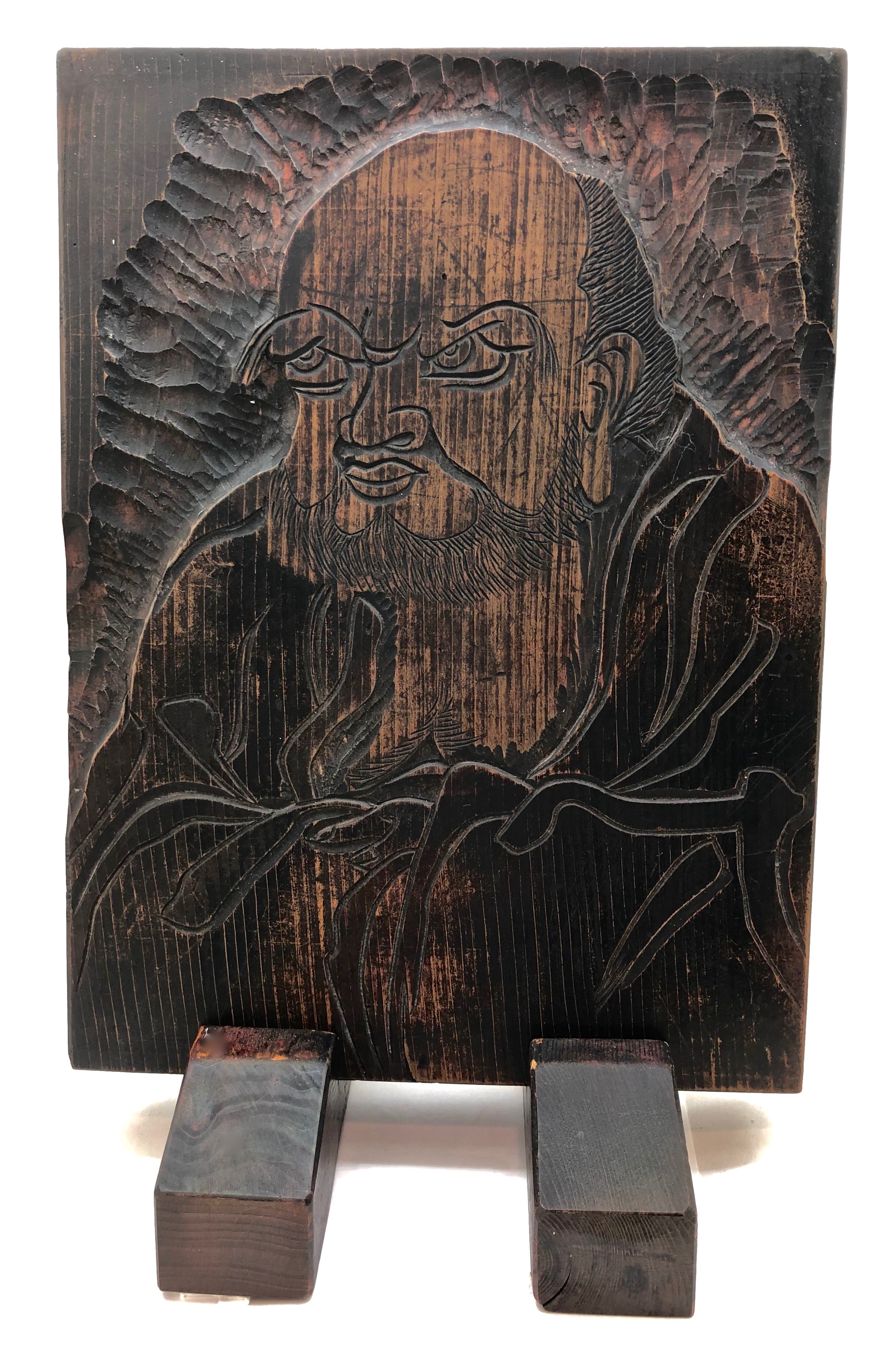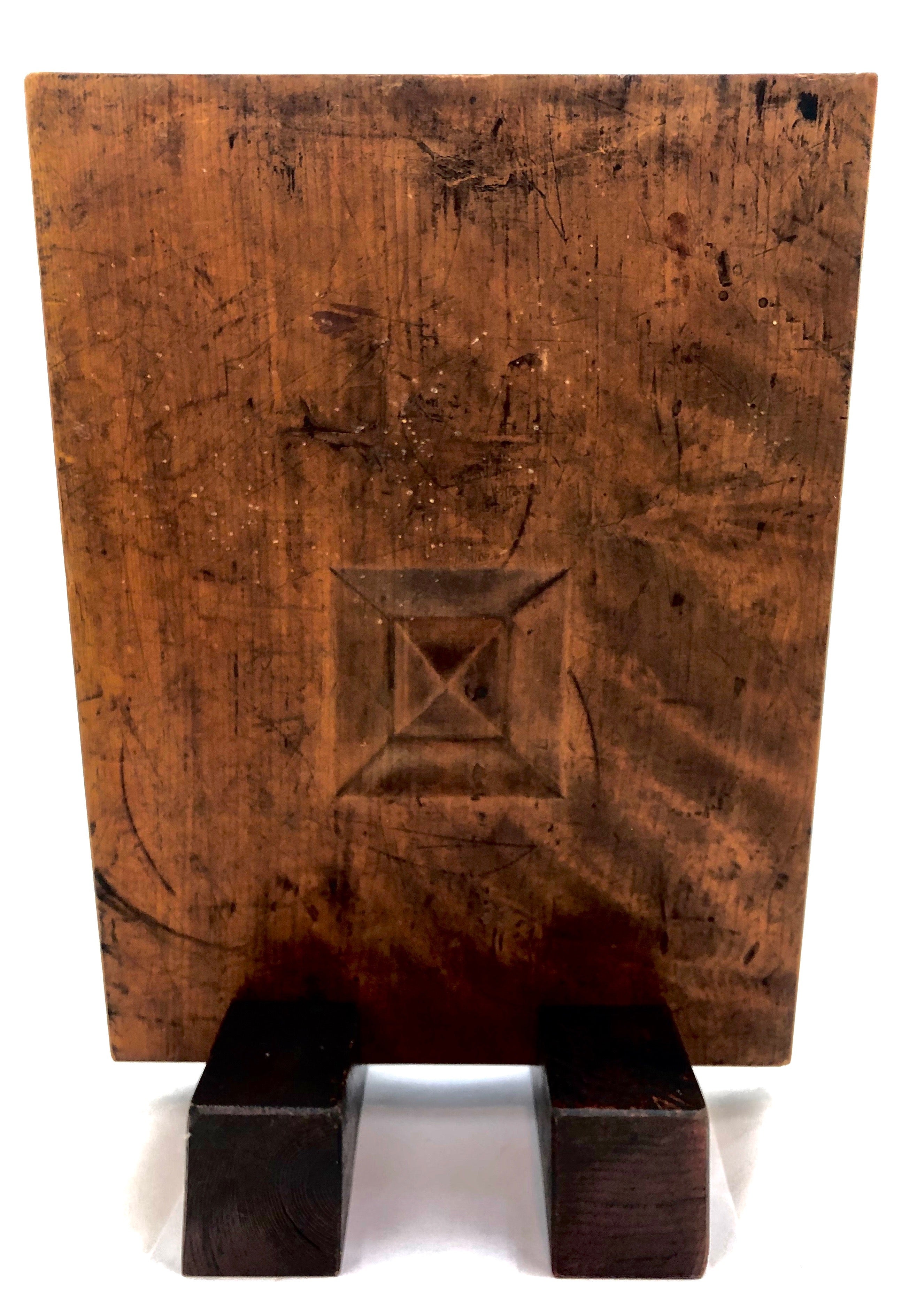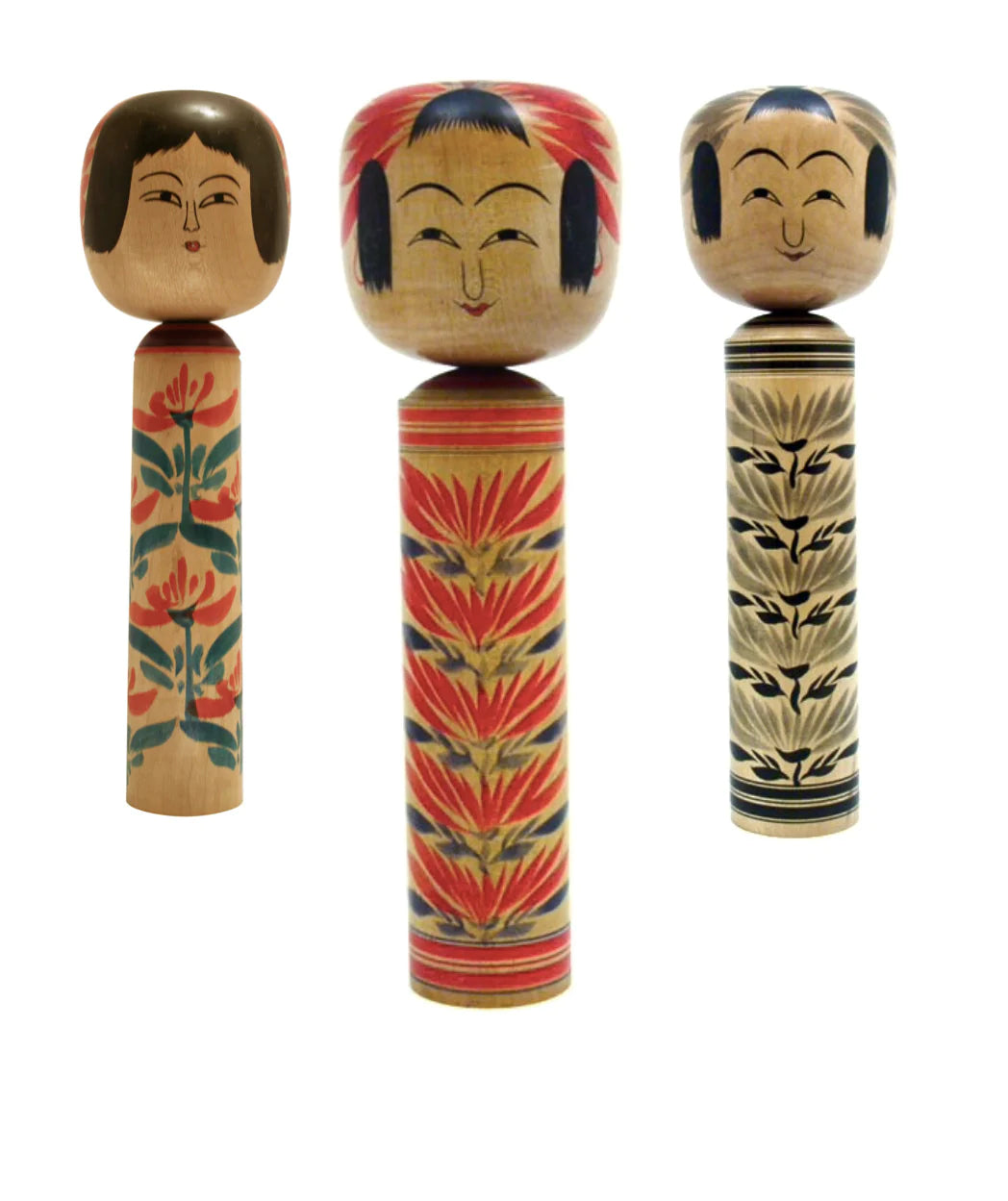



Japanese Antique Printer’s Block | Moku Hanga | Hangi Printing | Edo Period
Dimensions: Block - 15-3/4”l x 11-3/4”w x 2-1/4”h; Stand - 8-1/2”l x 2-1/4”w x 2-1/4”h; Weight - 9lbs
The Japanese technique of woodblock printmaking is very different from the Western technique in that water-based ink is applied with a brush and, while being printed by hand, is pressed deeply into the absorbent Japanese paper. During the period that this wood plate was used, woodblock printmaking was done only in Buddhist monasteries, to reproduce Buddhist texts and images, and later also for books in which thousands of images were printed in Japan from the period about 1710-1875. The first prints were just black-and-white prints (sumizuri-e) and before the “kento”, were invented in the 18th century for multi-colored woodblocks referred to as brocade images (nishiki-e). Being offered is this original woodcut printing plate of Daruma, originally from the Myouryuji Temple in Kanazawa. As you can imagine this is a very rare woodblock for it was difficult to find wood of sufficient size to make blocks of even modest dimensions. This woodblock was cut from cherry wood or pear wood but because of black ink buildup, it is difficult to discern other than from the back. The back of the piece shows the locking block to hold the piece in place while hand printing.
A colleague and cultural history professor at Bunka Gakuen University, Tokyo introduced us to a friend who owned an antique gallery in Kanazawa when at a time you had to prove a sound interest in the subject to be admitted into the shop. The owner of a shop proudly introduced us to his private collection of antique religious woodblocks, (see his storage space in the images provided in this offer), and after some discussion showed us this woodcut dated the 1950s, (see the print taken from this woodblock to show the quality of the woodcut. The print is not part of this offer because it was sold to a collector).
Antique Condition: The block is in superb condition, commensurate with age and use. The block was carefully aged to prevent warping. The woodcut came with a hand-crafted stand for display.
NOTE: Woodcut is a relief printing technique in printmaking. The oldest form of printmaking, a woodcut is a relief process in which knives and other tools are used to carve a design into the surface of a wooden block. The wooden block is usually made from pear or cherry wood, which is cut along the “plank” so that the woodcutter is cut along the grain of the wood and planed smooth. Printing is done by hand with ink applied to the humid block and transferred to handmade paper.
Return Policy
Our antique/vintage pieces are identified/described and professionally photographed, and considered, “as is”, therefore all sales are final. Read our full refund and return policy.


